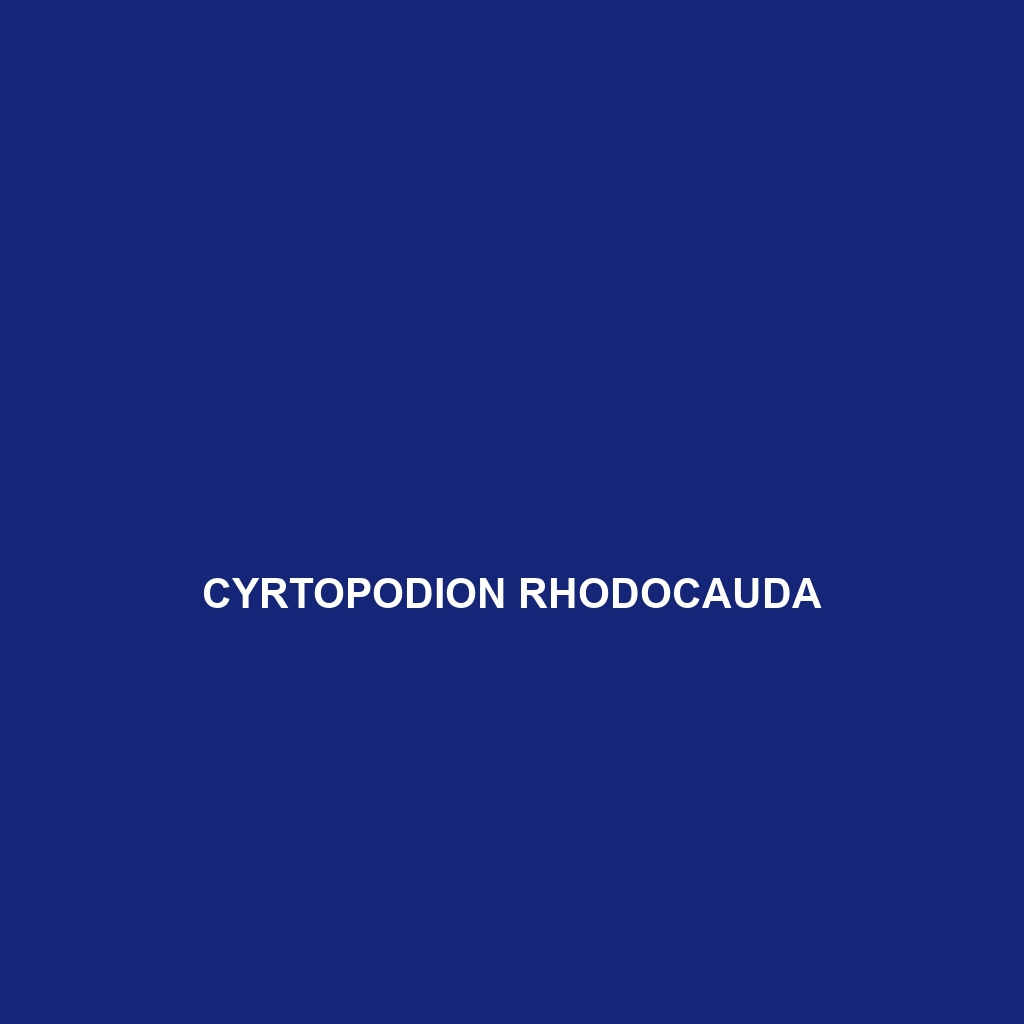Species Description: Cyrtopodion rhodocauda
Common Name: Cyrtopodion rhodocauda
Scientific Name: Cyrtopodion rhodocauda
Habitat
Cyrtopodion rhodocauda is primarily found in the arid and semi-arid regions of Central Asia, particularly in countries such as Uzbekistan, Tajikistan, and Kyrgyzstan. This species thrives in rocky desert environments and can often be spotted in sand dunes, alongside stony outcrops, and within areas rich in small vegetation. The temperature fluctuations and dry climate of these regions contribute to the unique adaptations of this gecko.
Physical Characteristics
Cyrtopodion rhodocauda is a small to medium-sized gecko, typically measuring about 10 to 12 centimeters in length. Its body is characterized by a slender, elongated shape, and it displays a remarkable array of colors ranging from light tan to reddish-brown, often with intricate patterns that provide excellent camouflage against the rocky terrain. A distinctive feature of this species is its flattish tail, which can appear swollen as a defense mechanism to deter predators.
Behavior
This species is primarily nocturnal, coming alive during the cooler hours of the night to hunt and explore. Cyrtopodion rhodocauda demonstrates a captivating display of agility and skill in climbing, making it an adept hunter of insects. Its reliance on thermal regulation helps it navigate its environment efficiently, as it utilizes both sunlight during the day and the cooler ground at night.
Diet
Cyrtopodion rhodocauda primarily feeds on a diet of small insects and arthropods, including crickets and spiders. This gecko possesses keen vision and adept hunting skills, allowing it to capture prey quickly under the cover of darkness. Its dietary habits play a critical role in controlling insect populations within its habitat.
Reproduction
The reproductive season for Cyrtopodion rhodocauda typically occurs in the spring and early summer months. Females lay 1 to 2 eggs at a time, often in sandy or loose substrates where they can easily conceal them from predators. This species exhibits maternal care by remaining close to the nesting site until the offspring hatch, showcasing an interesting parental behavior among geckos.
Conservation Status
Cyrtopodion rhodocauda is currently classified as vulnerable due to habitat loss and environmental changes affecting its natural range. Conservation efforts are crucial to protect its habitat and ensure the sustainability of its population in the wild.
Interesting Facts
This gecko is known for its unique coloration that can change slightly depending on the temperature and time of day, aiding in its camouflage. Additionally, its tail, which can shed in the face of danger, is a fascinating adaptation that enhances its survival.
Role in Ecosystem
Cyrtopodion rhodocauda plays a significant role in its nutrient cycle by preying on insects and contributing to the ecological balance within its habitat. As both predator and prey, it interacts closely with various species, including birds and larger mammals, thus helping to maintain the health of its ecosystem.
